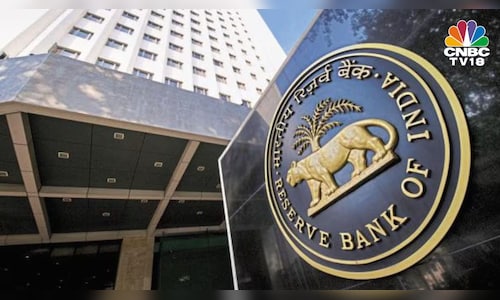At its February 5-7 meeting, the RBI Monetary Policy Committee decided to cut the repo rate by 25 basis points (bps) to 6.25% and chose to retain the neutral stance.
Speaking exclusively to CNBC-TV18, Nagesh Kumar said, “In December policy, the CRR was cut by 50 basis points. So, there is initiative or action on the liquidity front as well. But now we thought we could support the growth momentum further by having a repo rate cut. And that together, I think the transmission of liquidity to the markets could be further accelerated through the rate cut.”
Kumar stressed that fiscal policy has already played a role by enhancing public investment and implementing tax cuts to boost demand. With CPI inflation at 4.3%, a level he deemed comfortable, he argued that the MPC had sufficient room to begin normalising the monetary policy cycle with a rate cut.
“As I argued, one could have been a little bit more ambitious, but given the global circumstances, we all agree that we go step by step, and at this moment, 25 basis points. And as things evolve, maybe we can look at further actions in the future,” Kumar said.
Edited Excerpt from the Interview:
Q: You have said there is a scope for thinking about 50 basis points. Do you feel more help is needed? Therefore, the MPC should persist with more rate cuts even in coming meetings, the external environment notwithstanding.
Kumar: In the last meeting, everybody agreed that we must support growth. We also discussed how fiscal policy has already done its bit in sustaining the government or public investment, the capex, and cutting the tax rates to improve the purchasing power of the middle classes. So, fiscal policy had done its bit. Now, it was the turn of monetary policy to support that growth revival.
Fortunately, the inflation numbers were looking better than in the past two meetings of MPC. The CPI inflation at 4.3%, which had come after the meeting for January, is a very comfortable level compared to what it was in October and December, which allowed elbow room for the monetary policy to consider normalising the cycle of monetary policy with the first rate cut.
As I argued, one could have been a bit more ambitious, but given the global circumstances, we all agree that we go step by step, and at this moment, 25 basis points. As things evolve, we can look at future actions.
Q: You understand international trade much better than most people I know. Would you worry that if the interest rate differential between India and the dominant currency, the US, narrowed too much, further depreciation pressure could destabilise? So, the monetary policy should use liquidity steps rather than rate cuts. Would that be an argument at all?
Kumar: Yes, certainly. Liquidity management measures are very important. In December policy, the CRR was cut by 50 basis points. So, there is initiative or action on the liquidity front as well. But now, we could support the growth momentum further by having a repo rate cut. Together, the transmission of liquidity to the markets could be further accelerated through the rate cut.
Q: On the flip side, since you’re arguing about the need to support growth, and we’re talking about 6.7% this year, and the big sword hanging on the market’s head- the reciprocal tariffs, perhaps we may not hear the outcome until April. Do you think the committee will use the headroom to bring down rates or cut by 25 basis points steeply by the time the next MPC meet happens in March? What’s your sense of what the next steps are?
Kumar: As the minutes say, there is a lot of uncertainty, and we all agree about the evolving global environment. Trade policy and the United States’ statements are changing rapidly. So we have to watch, and hopefully, India can manage this with the Prime Minister’s visit to the United States, which everyone perceived as a success.
They announced the launch of a bilateral free trade agreement negotiation, which could help India better protect its interests. Therefore, it may be possible that we will be able to sustain our growth recovery despite the global challenges or the challenging global economic outlook. So, there is a reason to be concerned about the worldwide situation. In any case, the world trade and investment growth rates have been somewhat subdued. And with the new reciprocal tariffs talk and all that, it is, which way it would happen is anybody’s guess. However, having taken very proactive steps at this summit early on before major announcements were made, India may be able to take care of our interests through bilateral trade agreement negotiations between India and the United States. We have to keep watching the situation.
Watch the accompanying video for the entire conversation.


